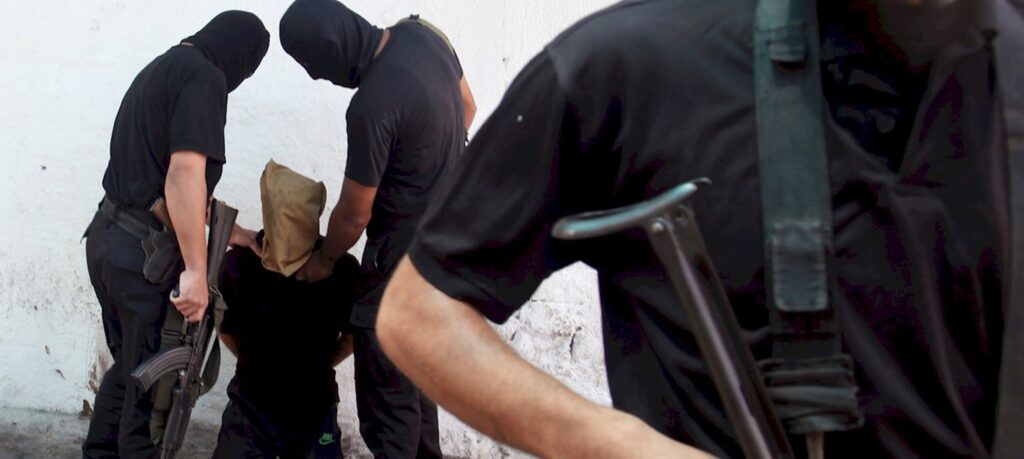GAZA CITY, Gaza Strip — Hamas has executed multiple individuals accused of looting as lawlessness escalates in Gaza, where a severe food crisis continues to deteriorate under Israel’s months-long blockade, sources within the militant group confirmed Saturday.

The executions were reportedly carried out after heavily armed gangs targeted food warehouses and community kitchens across the besieged enclave this week. Hamas officials accused some of the looters of acting as collaborators with Israel, which has tightly restricted humanitarian aid from entering Gaza since late February. Israel has not commented on the allegations.
The Hamas-run Interior Ministry said it is taking extreme measures to restore order. In a statement issued Saturday, the ministry vowed to “strike with an iron fist all these renegades” and said it would pursue anyone threatening public security and stealing from civilians “no matter the cost.”
The crackdown came amid mounting desperation among Gaza’s 2.3 million residents, many of whom are on the brink of starvation. The United Nations has warned of “famine-like conditions” and mass displacement, as Israel’s military operations and blockade—triggered by the Oct. 7 Hamas-led attack—have devastated the territory’s infrastructure and access to basic supplies.
Ismail Al-Thawabta, director of Gaza’s Hamas-controlled media office, said the executions targeted “several top criminals” who were allegedly involved in large-scale theft and extortion. “Some of them operated under clan umbrellas, while others were part of organized criminal networks receiving direct support from the occupation,” he said, referring to Israel.
Palestinian media reported that Hamas’ armed wing imposed nightly curfews beginning at 9 p.m. across several areas to restrict civilian movement and root out criminal activity. Residents described scenes of chaos, with gangs robbing travelers at gunpoint and stealing food aid.
“Those gangs, some of them armed, have terrorized people, not only stealing food, but stopping some people on the roads and taking away their money and phones,” said Ahmed, a resident of Gaza City who declined to give his full name for security reasons. “They aid the occupation in starving us; they must be dealt with as collaborators.”
The interior ministry, according to the pro-Hamas SAFA news agency, has assembled a new rapid-response force of 5,000 personnel tasked with confronting looters and criminal gangs. However, efforts by local police have been severely hindered by Israeli drone strikes, which continue targeting armed individuals in densely populated areas.
In one incident this week, a Hamas police officer was killed and others wounded after an Israeli drone strike targeted a patrol pursuing suspects in Gaza City, according to the interior ministry. Israeli officials did not comment on the strike.
Since the beginning of Israel’s retaliatory campaign in October, more than 52,500 Palestinians have been killed, according to Gaza’s health ministry. The offensive began after a Hamas assault on southern Israel that left 1,200 people dead and 251 taken hostage. Israeli officials argue that Hamas has siphoned off aid for its fighters, a charge Hamas has repeatedly denied.
Meanwhile, at least 40 Palestinians were killed in the last 24 hours in renewed Israeli air and artillery strikes across the enclave, health officials said. The ongoing violence has severely restricted humanitarian operations, even as food, water, and medicine grow scarcer by the day.
With police presence weakened and social order eroding, the Gaza Strip has seen sporadic unrest and rare public protests against Hamas, particularly over the uneven distribution of aid and increasing hardship. Hamas’ response to the unrest—swift executions and mass deployment of new security forces—appears aimed at quelling further dissent amid the most acute crisis in Gaza’s modern history.


